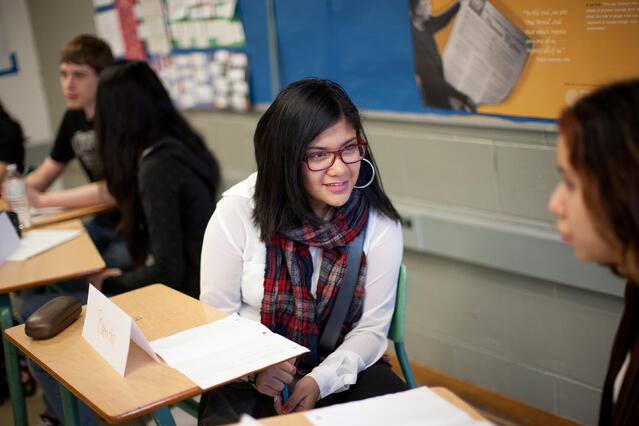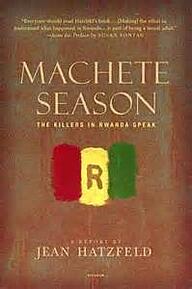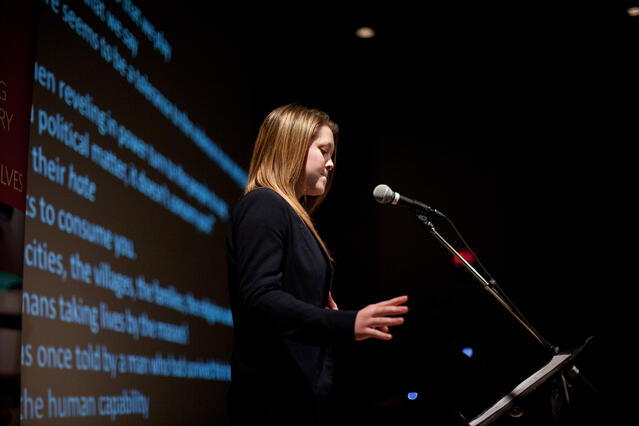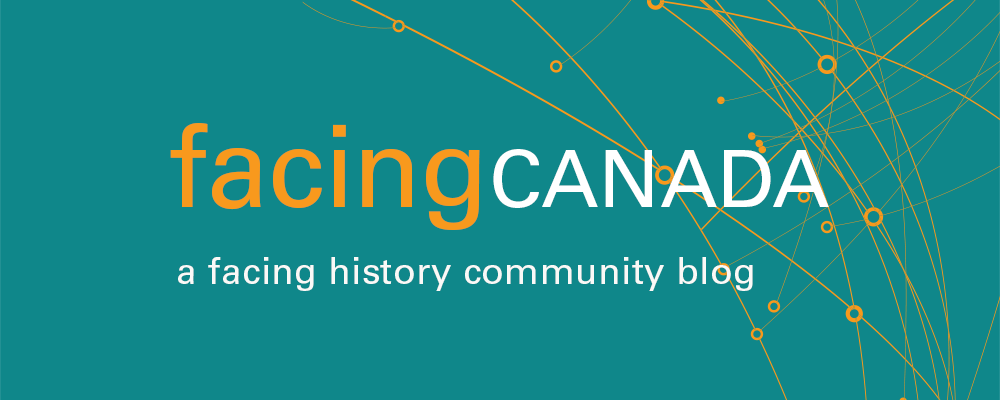Over the years I have had many conversations with colleagues about how the Facing History and Ourselves’ Scope and Sequence—the framework for investigating atrocities in history—works in our classrooms. One of the topics that is brought up often is the last phase, Choosing to Participate.
I think this aspect of the course is a topic of frequent discussion because, after working all year to learn about identity and membership, explore difficult historical case studies, and delve into the complexities of judgment, memory, and legacy, how do we create end of year projects that provide students with opportunities to Choose to Participate? How do we ensure that the project is meaningful in terms of helping to develop life-long learning skills and a sense of agency in their lives and communities?

Does Choosing to Participate have to be direct action based in order to develop the above skills? I don’t think so. For me, Choosing to Participate encompasses a wide range of activities. I believe that students taking actions that promote independent inquiry and investigation, such as reading books and engaging in research, are also Choosing to Participate. I have outlined below a few ideas that have proved successful in my classroom.
Independent Case Study
In my grade 11 Genocide and Crimes Against Humanity course, we study three historical cases of genocide: Armenia, the Holocaust, and Rwanda. Over this course of study, many students make connections to other cases. Often, these cases are of personal interest to them. For example, in my school there is a large population of Tamil students who are curious to examine the civil war in Sri Lanka using the knowledge and historical thinking skills that they have developed in the course. This is an important opportunity for students to engage with difficult (often personal) histories with guidance and support. Through this project students often find their own voices, and the evidence to back them up, regarding historic and current events. Students whose families hail from Sri Lanka, Cambodia, Sudan, Afghanistan, and Guatemala have expressed their appreciation for having the opportunity to explore a difficult history that is close to them. As one student wrote in their end of year course evaluation, "my favorite thing about this course is that everything that we learn actually
matters and has relevance in the world. I don't have to learn about genocide, but I want to. Genocide is not the past, it is the present and future and the only way to prevent it is to know what it is..." This project is an avenue for students like this to learn more about what genocide is.
Book Study: Engaging in Deeper Investigation
During the course students often find topics, themes, or events that deeply impact them . This opens up a great opportunity for them to deepen their knowledge and develop a love of reading and learning as a life-long skill. In my course, students select a book and prepare a book report that includes a summary and a personal reflection on how it has expanded and deepened their understanding of genocide and genocide studies. For example, a student in my class found the study of perpetrator voice in the Rwandan genocide to be challenging and wanted to know more. He read the book Machete Season: The Killers in Rwanda Speak by Jean Hatzfeld and did a fantastic job trying to work through the complex nature of justice and reconciliation in post-genocidal societies. Similar to the Independent Case Study project, the Book Study allows students to Choose to Participate by following themes or topics that pique their curiosity. By identifying an area of interest and pursuing it in a self-directed book study, students develop life-long inquiry and learning skills that will make them more informed citizens for the rest of their lives.
. This opens up a great opportunity for them to deepen their knowledge and develop a love of reading and learning as a life-long skill. In my course, students select a book and prepare a book report that includes a summary and a personal reflection on how it has expanded and deepened their understanding of genocide and genocide studies. For example, a student in my class found the study of perpetrator voice in the Rwandan genocide to be challenging and wanted to know more. He read the book Machete Season: The Killers in Rwanda Speak by Jean Hatzfeld and did a fantastic job trying to work through the complex nature of justice and reconciliation in post-genocidal societies. Similar to the Independent Case Study project, the Book Study allows students to Choose to Participate by following themes or topics that pique their curiosity. By identifying an area of interest and pursuing it in a self-directed book study, students develop life-long inquiry and learning skills that will make them more informed citizens for the rest of their lives.
Action Project

This project doesn’t have to have anything to with genocide. Students are asked to design and implement an action project that deals with an issue that they are passionate about. This could be an awareness campaign, a teach-in, or taking part in direct action. For example, I taught a student who was passionate about raising awareness of mental health issues. She wore a large piece of paper with a factoid about mental health written on it around her neck every day for two weeks. This sparked conversations in classes and in the hallways and led to meaningful learning and reflection. Other action projects have ranged from battling homophobia and Islamophobia to tree planting in a local nature reserve. It is so important that students see that their actions can truly create learning and change!
How do you create opportunities for students to choose to participate in your classroom?

